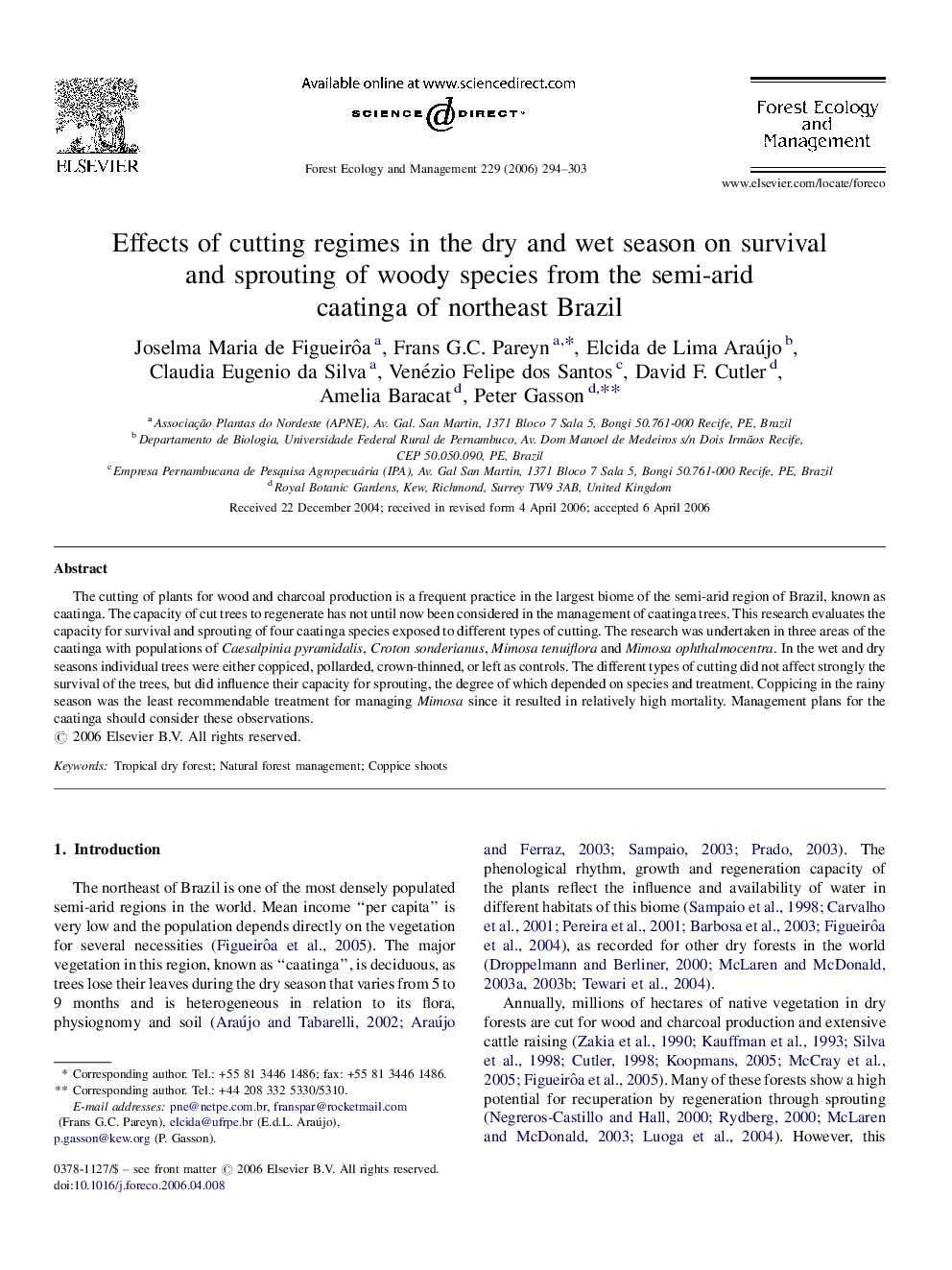| کد مقاله | کد نشریه | سال انتشار | مقاله انگلیسی | نسخه تمام متن |
|---|---|---|---|---|
| 90847 | 159403 | 2006 | 10 صفحه PDF | دانلود رایگان |

The cutting of plants for wood and charcoal production is a frequent practice in the largest biome of the semi-arid region of Brazil, known as caatinga. The capacity of cut trees to regenerate has not until now been considered in the management of caatinga trees. This research evaluates the capacity for survival and sprouting of four caatinga species exposed to different types of cutting. The research was undertaken in three areas of the caatinga with populations of Caesalpinia pyramidalis, Croton sonderianus, Mimosa tenuiflora and Mimosa ophthalmocentra. In the wet and dry seasons individual trees were either coppiced, pollarded, crown-thinned, or left as controls. The different types of cutting did not affect strongly the survival of the trees, but did influence their capacity for sprouting, the degree of which depended on species and treatment. Coppicing in the rainy season was the least recommendable treatment for managing Mimosa since it resulted in relatively high mortality. Management plans for the caatinga should consider these observations.
Journal: Forest Ecology and Management - Volume 229, Issues 1–3, 1 July 2006, Pages 294–303